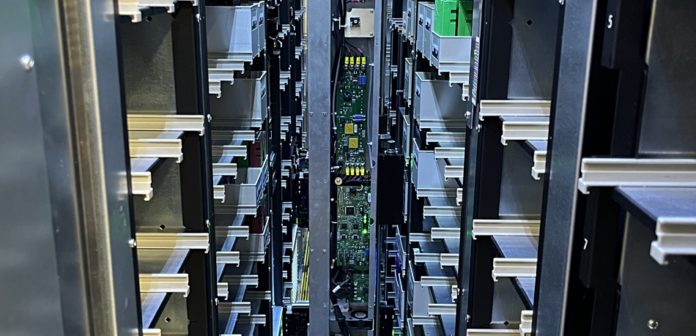Over 43 years Spectra Logic has built a niche tape, archive, nearline, object, on-premises, and multi-cloud data management empire.
Quantum is the only other standalone tape library and adjacent systems supplier. Along with Spectra Logic, both are the twin survivors of the once bustling tape hardware and software business. Both are also seeing a renaissance of tape as hyperscalers realize that it is the best available archive medium in a world of unceasing unstructured data growth.

Spectra Logic is based in Boulder, Colorado, and supplies tape libraries plus a set of frontend systems for object storage caching, nearline storage, hierarchical, and multi-cloud storage management. It has more than 20,000 installations in over 80 countries and has amassed 125 patents, 19 filed by the founder. It has made just one acquisition, from which it gained its name, and has been profitable for quite a while.
Founder, chairman, and CEO Nathan Thompson started Western Automation, as it was originally called, in 1979 when he was 19, withdrawing $500 from his bank account to fund the new business. Thompson was then studying electrical engineering at the University of Colorado in Boulder. Western Automation made memory boards, peripheral test equipment, and also storage systems.
Thompson happened to be a pinball machine fan as well, collecting and restoring them, and there are some from his collection in an employee room at the Boulder HQ.
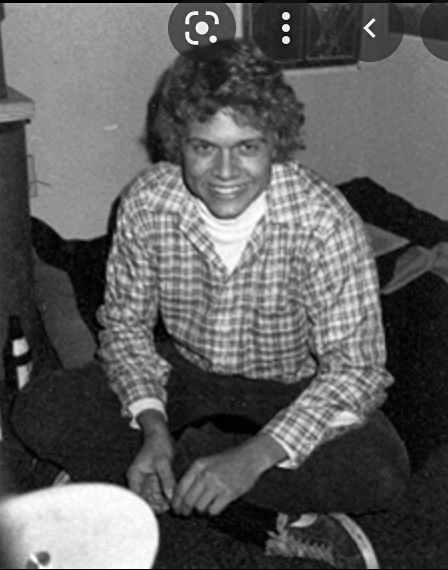
Spectra Logic is owned by Thompson and his staff under an employee stock ownership plan (ESOP). There are some 500 or so employees. The company hosted an IT press tour at its HQ in June and attendees learned that many employees have been with the company for decades and experienced a family business type of environment.
The Spectra Logic interface business was bought in 1988 and Western Automation delivered its first tape libraries around 1992. The STL-6000 Automated Tape Library took up 7U of rackspace and stored up to 100GB of uncompressed data. An STL-8000 stored double that through having 40 x 5GB 8mm tape cartridges rather than 20. Both were OEM products and had SCSI interfaces; Spectra was the first company to add this interface to tape libraries and also the first one to add integrated hardware encryption.
For those with long memories, the STL-6000 supported hosts running Unix, VAX/VMS, OS/400, NetWare, and other operating systems.
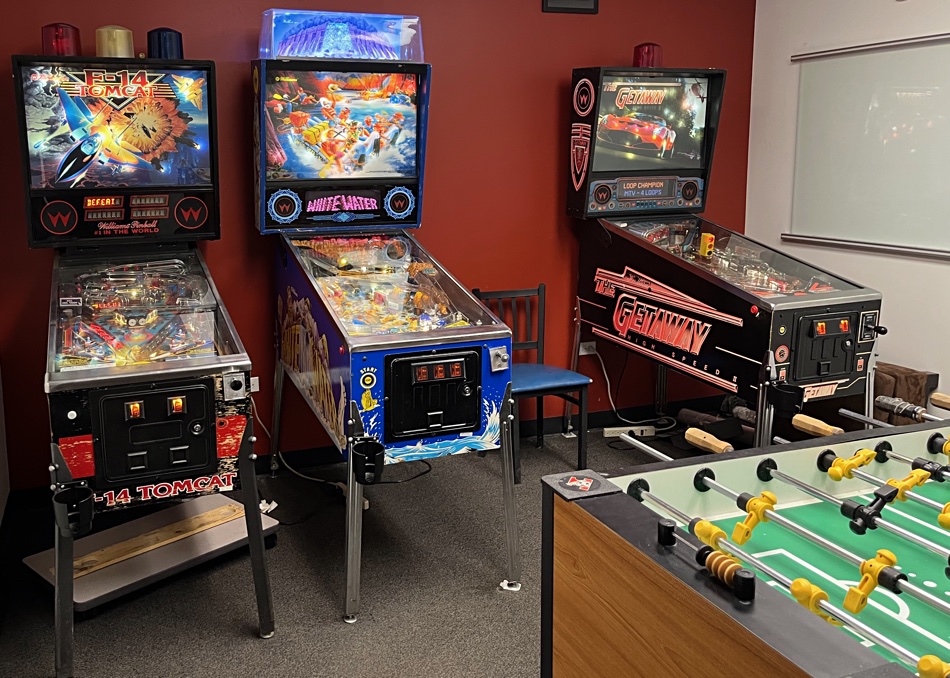
It renamed itself Spectra Logic in 1993 to take advantage of Spectra’s greater brand awareness. Spectra then developed a whole string of tape library products culminating in the T-finity in 2009, supporting more than 300,000 tape cartridges with dual, redundant robots.

These libraries are used by many household names such as CERN, Lawrence Livermore National Laboratory, NASA, FedEx, the NCSA’s Blue Waters supercomputing system, the Oak Ridge National Laboratory, the Rutherford Appleton Laboratory, and, possibly, Amazon Web Services for Glacier.
But Spectra Logic also branched out into making products that made tape libraries easier to use. We built our own little diagram showing this product evolution:
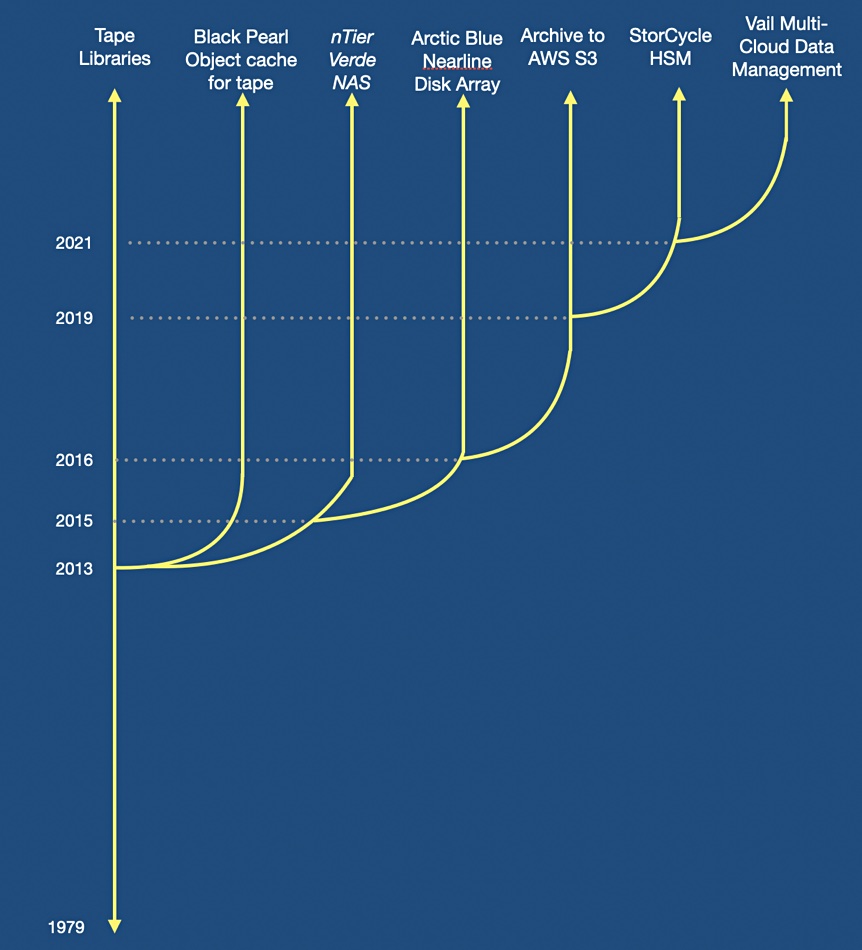
The first one was Black Pearl in 2013, an object storage caching appliance that front-ended a tape library and presented an LTFS interface. Spectra built the nTier Verde NAS appliance in the same year but that is now a legacy product. The Arctic Blue nearline object store disk array followed in 2015.
Direct archiving to AWS’s S3 Glacier store came along in 2016, followed by the StorCycle hierarchical storage management product in 2019. The newest product is Vail, a policy-based data orchestration tool presenting all the data in a customer’s IT environment as a single storage pool. It was launched in October last year.
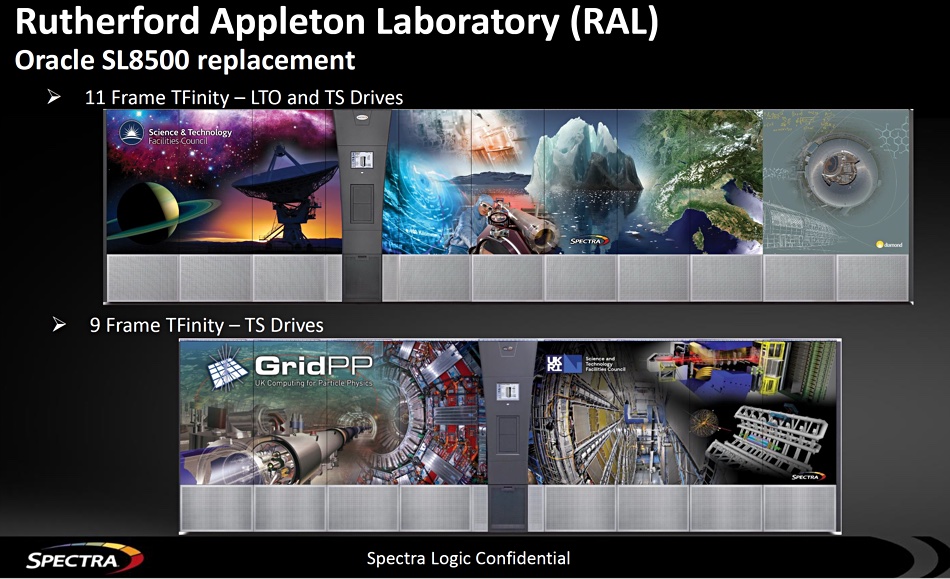
Spectra’s mainstream products are the tape libraries, followed by Black Pearl, StorCycle, and Vail. It presents itself as supplying attack-hardened data management and storage for the multi-cloud world. The company survived a ransomware attack in late 2020 and has documented how it recovered. That attack prompted a hardening of its products to help customers defy ransomware.
Spectra annual revenues are, we think, somewhere between $100 million and $200 million. It spends around 19 per cent of these revenues in R&D and was profitable in 2019, almost profitable in 2020, profitable again in 2021, and should make an operating profit this year.
The most comparable firm is Quantum, which also has a group of software and hardware products around its core tape library offering. It is, like Spectra, also Colorado-based and has very many long-standing employees as well. But then tape is all about keeping valuable things for a long-time.
We think Spectra has more of a family business atmosphere air about it than Quantum. It has, of course, escaped the bad times that former Quantum CEOs inflicted on that business and so avoided CEO changes.
Spectra will likely face a CEO transition in five to ten years time, possibly longer; Thompson having been born in 1960. That will be a major decision point, as preserving the firm’s culture while growing the business and withstanding whatever shocks the market throws at it, will be quite a task. We imagine Thompson will stay on as chairman and help provide the cultural continuity.


